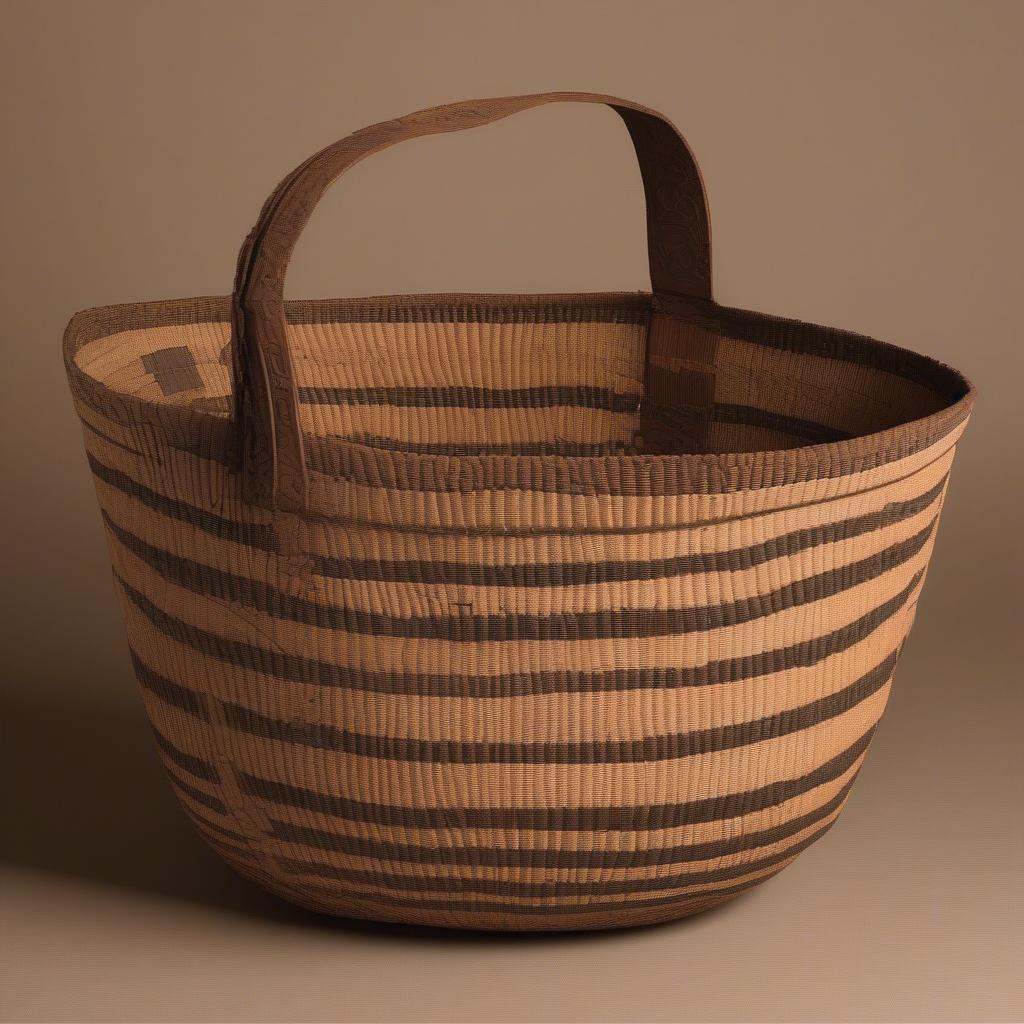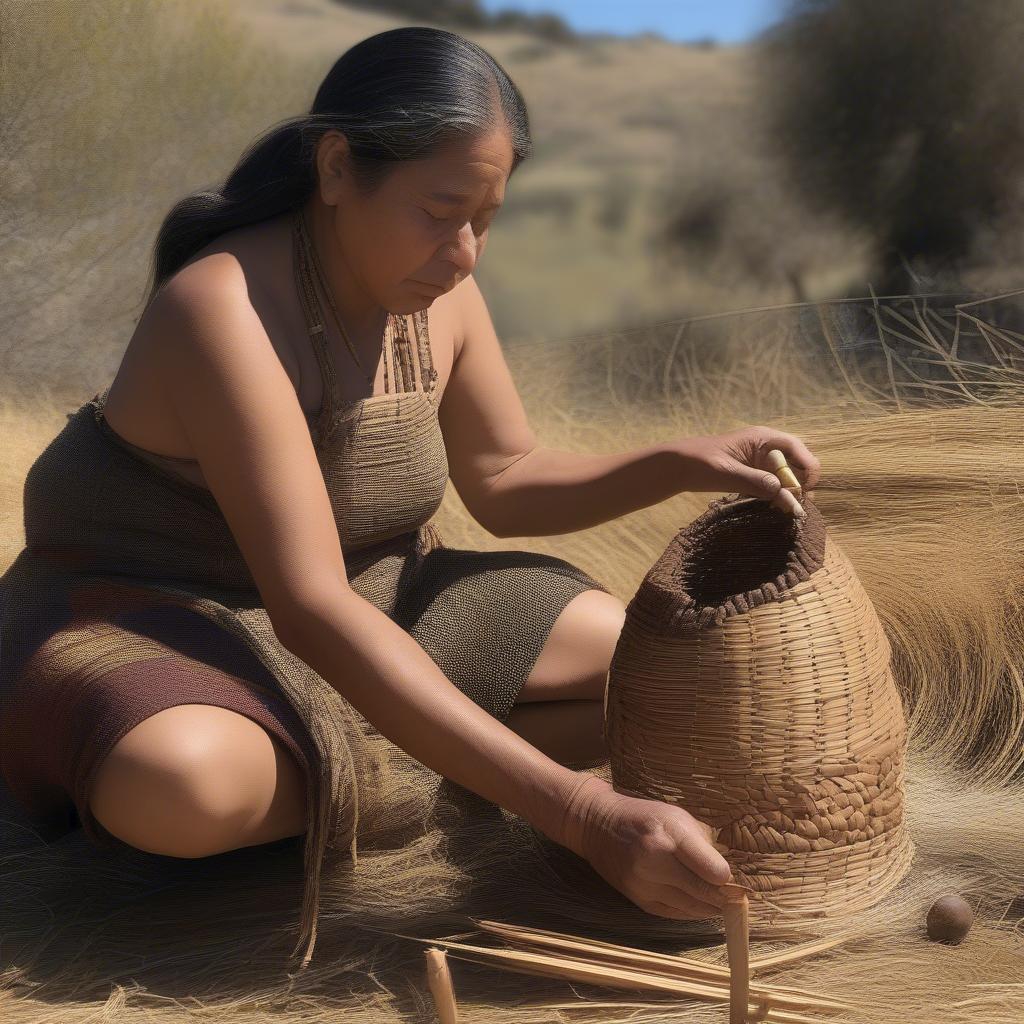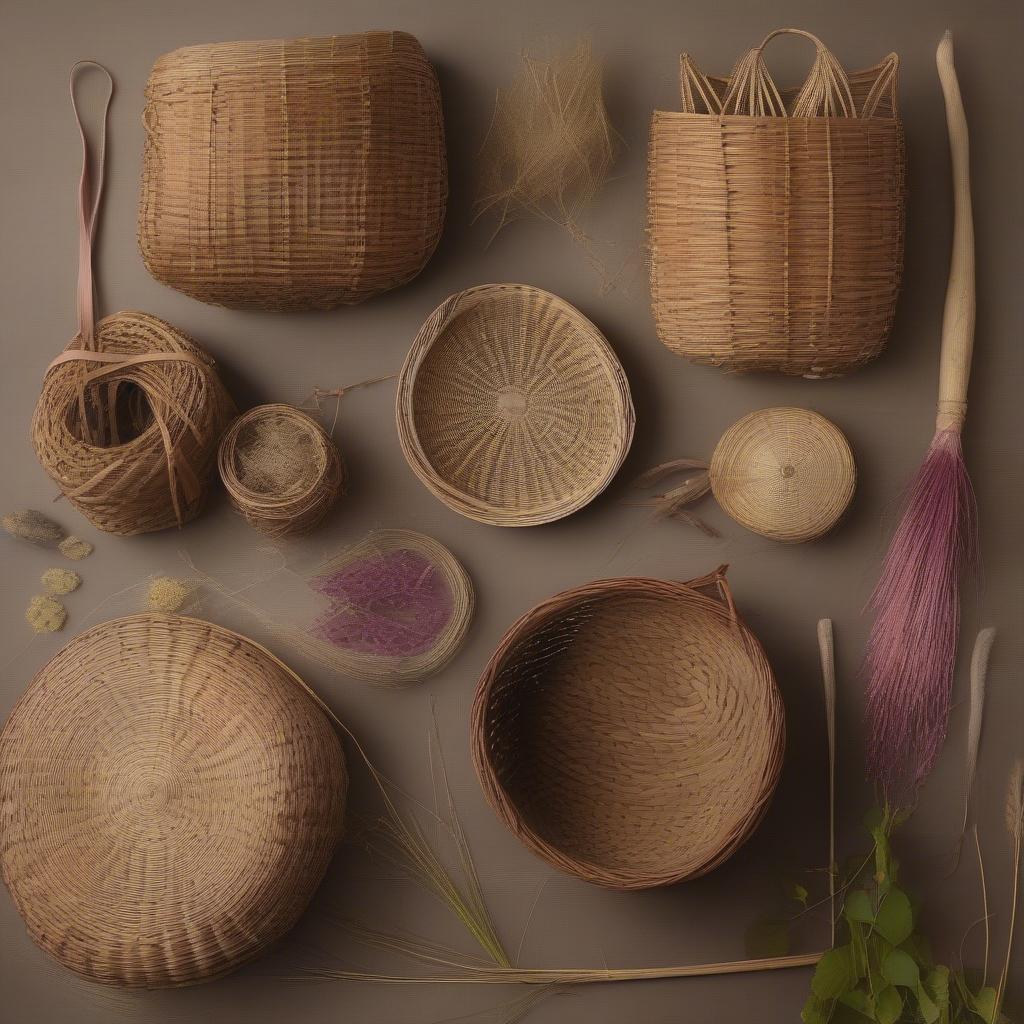Basket Weaving
Ohlone Basket Weaving: A Legacy of Artistry and Cultural Significance
Ohlone Basket Weaving is a testament to the rich cultural heritage and artistic skills of the Ohlone people, indigenous to the San Francisco Bay Area. These intricately woven baskets are not merely functional objects; they are expressions of deep connection to the land, imbued with stories, traditions, and a profound respect for nature. This article explores the fascinating world of Ohlone basket weaving, from its historical roots to its contemporary resurgence, examining the techniques, materials, and cultural significance that make this art form so unique.
The History and Significance of Ohlone Basket Weaving
For centuries, Ohlone basket weaving has been an integral part of their daily life and spiritual practices. Baskets served a multitude of purposes, from gathering and storing food to ceremonial uses and trade. These meticulously crafted objects reflect the Ohlone people’s intimate knowledge of their environment, utilizing the abundant natural resources available to them.  Antique Ohlone Basket – A Testament to Traditional Weaving The complex designs woven into the baskets often held symbolic meaning, representing stories, beliefs, and clan affiliations passed down through generations. This tradition, however, faced near extinction during the period of Spanish colonization. The disruption of traditional lifeways and the introduction of new materials led to a decline in basket making practices.
Antique Ohlone Basket – A Testament to Traditional Weaving The complex designs woven into the baskets often held symbolic meaning, representing stories, beliefs, and clan affiliations passed down through generations. This tradition, however, faced near extinction during the period of Spanish colonization. The disruption of traditional lifeways and the introduction of new materials led to a decline in basket making practices.
The Ohlone Basket Weaving Revival: Reclaiming a Cultural Legacy
Despite the challenges, the spirit of Ohlone basket weaving has persevered. A resurgence of interest in traditional arts and cultural revitalization efforts has led to a renewed focus on this ancient craft. Contemporary Ohlone weavers are diligently working to reclaim and revive the knowledge and skills of their ancestors. They are studying historical baskets, learning from elders, and experimenting with traditional techniques to ensure the continuation of this important cultural legacy.  Modern Ohlone Basket Weaver Practicing Traditional Techniques This revival is not simply about replicating old designs; it’s about connecting with ancestral knowledge, fostering cultural pride, and ensuring that Ohlone basket weaving continues to thrive for generations to come.
Modern Ohlone Basket Weaver Practicing Traditional Techniques This revival is not simply about replicating old designs; it’s about connecting with ancestral knowledge, fostering cultural pride, and ensuring that Ohlone basket weaving continues to thrive for generations to come.
Ohlone Basket Weaving Materials and Techniques: A Close Look at the Process
Ohlone basket weaving is characterized by the use of readily available natural materials, primarily sourced from the local environment. Sedges, rushes, willow, and redbud are meticulously gathered and prepared before being woven into intricate patterns.  Natural Materials Used in Ohlone Basket Weaving The techniques involved are complex and require patience, skill, and a deep understanding of the materials. Coiling, twining, and plaiting are common methods used to create the basket’s structure, each requiring precise movements and attention to detail. The tight, intricate weaves not only create beautiful designs but also ensure the basket’s durability and functionality.
Natural Materials Used in Ohlone Basket Weaving The techniques involved are complex and require patience, skill, and a deep understanding of the materials. Coiling, twining, and plaiting are common methods used to create the basket’s structure, each requiring precise movements and attention to detail. The tight, intricate weaves not only create beautiful designs but also ensure the basket’s durability and functionality.
What makes Ohlone basket weaving unique?
Ohlone basket weaving is distinguished by its unique combination of functionality, artistry, and cultural significance. The intricate designs and the use of natural materials reflect a deep connection to the land and a rich history of storytelling. Unlike mass-produced baskets, Ohlone baskets are imbued with the weaver’s individual expression and the spirit of their ancestors.
How long does it take to weave an Ohlone basket?
The time required to weave an Ohlone basket varies depending on the size, complexity of the design, and the weaver’s experience. It can range from several days to several weeks, or even months for larger and more intricate pieces.
Where can I learn more about Ohlone basket weaving?
There are several resources available for learning more about Ohlone basket weaving, including museums, cultural centers, and online resources dedicated to preserving and promoting indigenous arts.
Conclusion: The Enduring Legacy of Ohlone Basket Weaving
Ohlone basket weaving stands as a powerful symbol of cultural resilience and artistic expression. Through the dedication of contemporary weavers, this ancient craft continues to evolve and inspire, connecting past, present, and future generations. By understanding and appreciating the history, techniques, and cultural significance of Ohlone basket weaving, we can contribute to the preservation of this valuable art form and honor the legacy of the Ohlone people.
FAQs
-
What materials are used in Ohlone basket weaving?
Ohlone weavers primarily use natural materials such as sedges, rushes, willow, and redbud. -
What are some common Ohlone basket weaving techniques?
Coiling, twining, and plaiting are frequently used techniques. -
How can I support Ohlone basket weavers?
You can support Ohlone basket weavers by purchasing their work, attending workshops, and spreading awareness about their art. -
Where can I see examples of Ohlone baskets?
Many museums and cultural centers showcase Ohlone baskets, offering insights into their history and artistry. -
What is the cultural significance of Ohlone basket weaving?
Ohlone basket weaving represents a deep connection to the land, ancestral knowledge, and cultural identity. -
How is Ohlone basket weaving being revived today?
Contemporary Ohlone weavers are actively reclaiming traditional techniques and teaching new generations. -
Are Ohlone baskets still used today?
While some Ohlone baskets are created for ceremonial or artistic purposes, others are still used for practical functions, demonstrating the enduring practicality of this art form.
When you need support please contact Hotline: +84 388 951 999, address: Hanoi, Vietnam or Tech Avenue, Suite 12, San Francisco, CA 94105, USA. We have a 24/7 customer support team.
